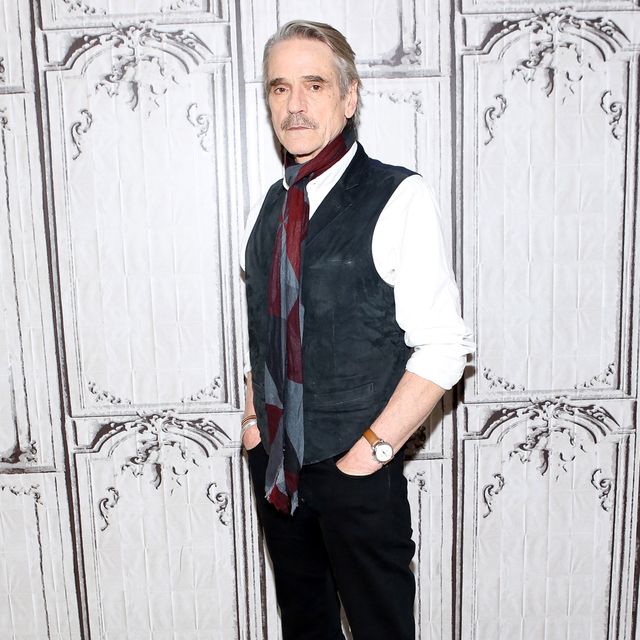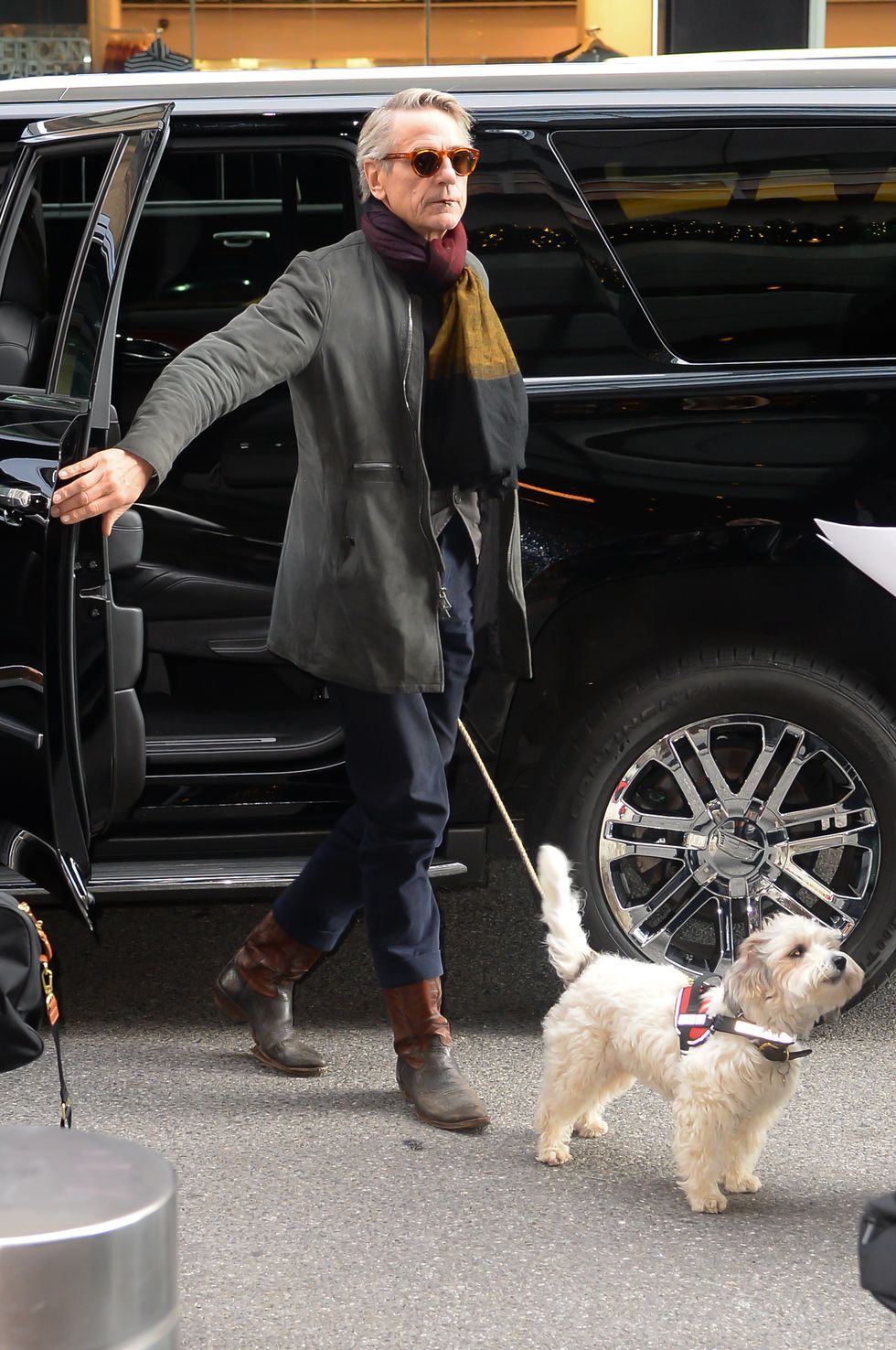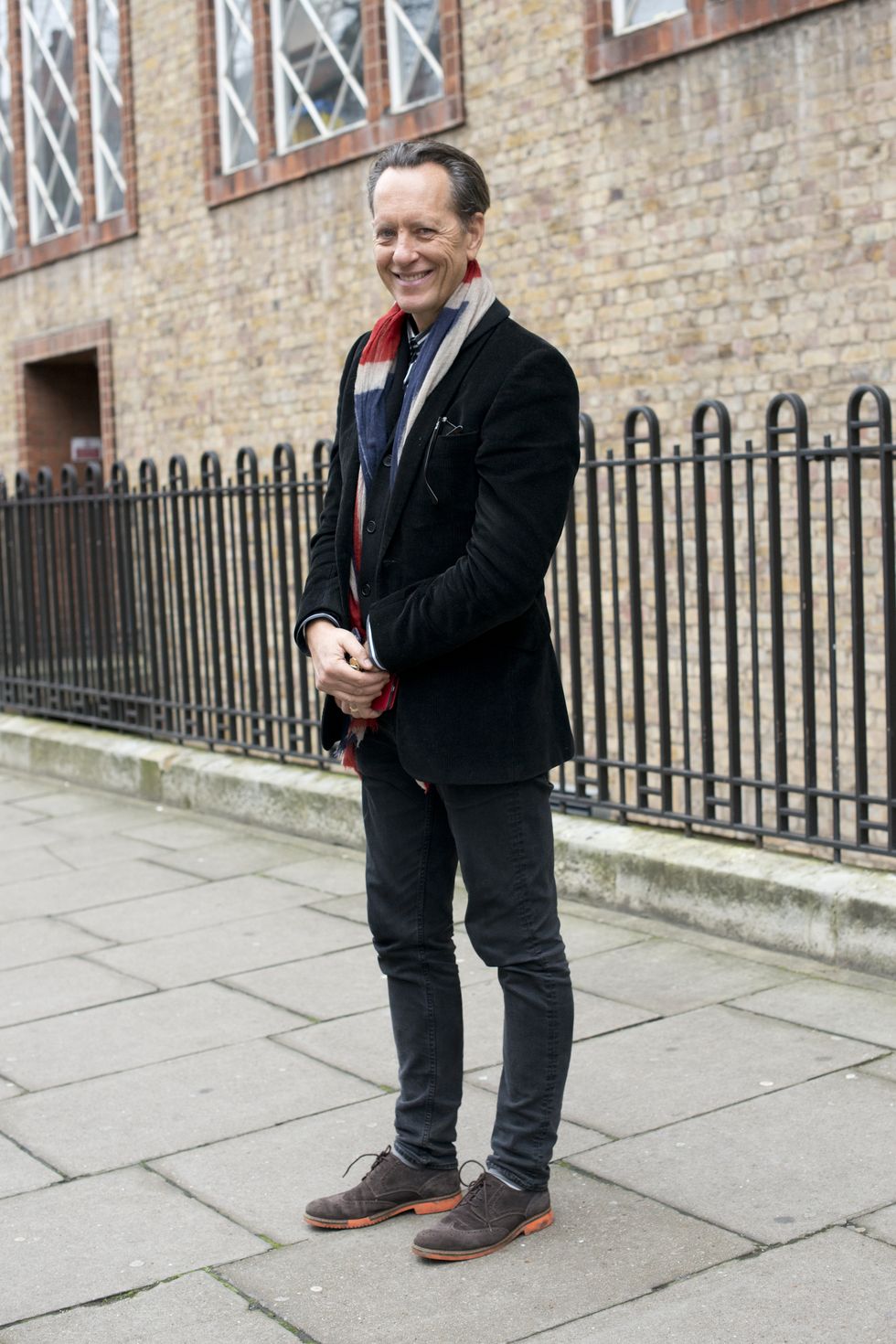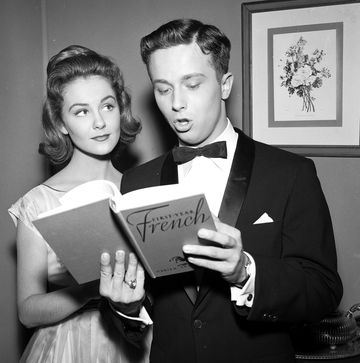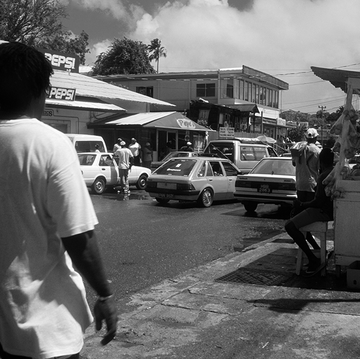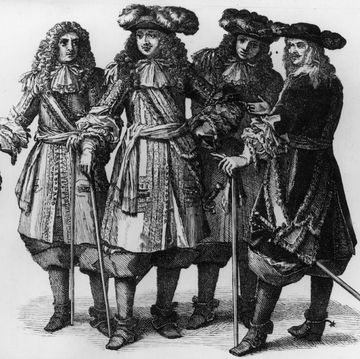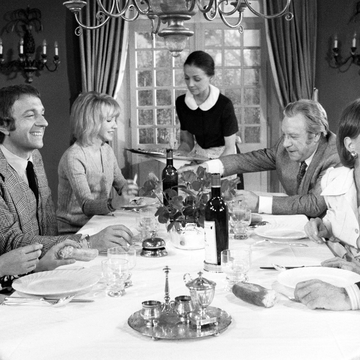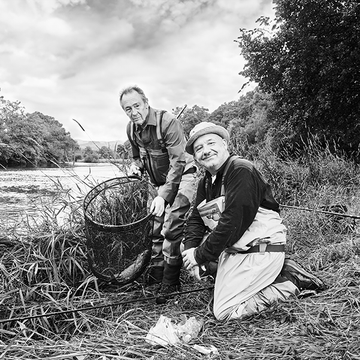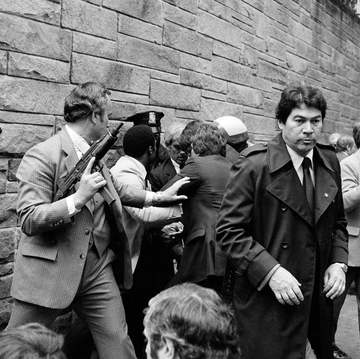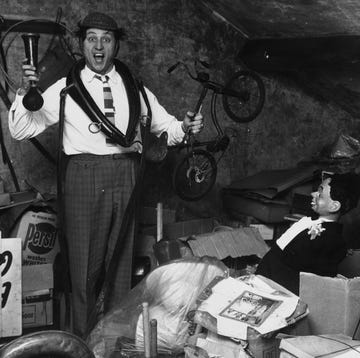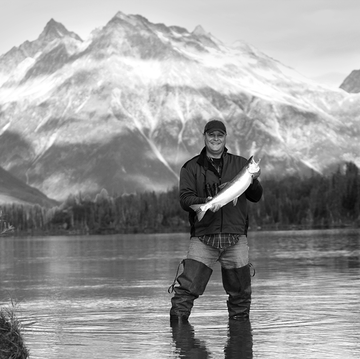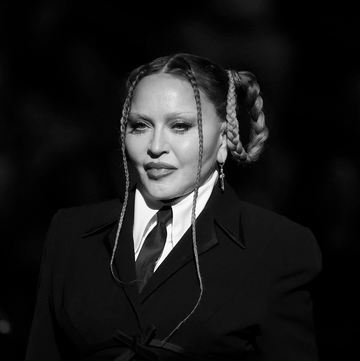Jeremy Irons is buying a loaf of artisanal sourdough from my local bakery. It is around 9am, the month is December and conditions are distinctly frosty. The rest of the queue is togged up in requisite North Face and Patagonia or that weird, Matrix mum gym gear that has become de rigueur for the West London school run set. But Irons, Oscar-winning star of Reversal of Fortune, and my Notting Hill neighbour for the past five years, has gone off script and decided on an alternative ensemble. He is wearing a thick-knit, U-boat commander roll-neck in navy; a blue polka dot silk scarf, double wrapped and tied with a rakish flamboyance; expensive looking, English-made loafers in brown; no socks and... black leather trousers. The old, broken-in strides — possibly of classic motorcycling provenance — are hoiked up to reveal an elegantly turned, bare ankle.
Irons, long-legged, slim and cross-looking, collects his bread and unhooks two adorably scruffy dogs from their tether at the door. His specs are tortoiseshell and collegiate. His full head of grey hair is floppy and magnificent. Jeremy Irons and his mise-en-scène leather trousers have turned the mundane process of purchasing food into a dazzling theatrical exposition.
Other infrequent Irons sightings have revealed a thrillingly international cast of sartorial exotica: jackets of the Nehru, safari, biker and chore variety. I’ve seen him in Cossack footwear, collarless Indian shirts and long ethnic smocks worn over drop-crotch, MC Hammer-ish pantaloons. Here he is again, storming off for a tour around Kensington Gardens with his brace of mutts: teddy bear coat in dark chocolate, tweed newsboy cap turned backwards, jumbo cord trews tucked into polo players’ knee boots. Irons, I have noticed during my half decade of sidewalk scrutiny, loves a knee boot.
Yes, callow hypebeast fashionistas, Grailed subscribers, Supreme store groupies and Dover Street Market habitués would probably dismiss 70-year-old Jeremy Irons’ clobber as fusty, overly affected and laughably unconnected to the sartorial zeitgeist, but the likes of him, and Richard E Grant, Ian McKellen, Ian McShane, MarkRylance and Gary Oldman aren’t trying to be modish as they throw on, say, a camel coat, a Bafta nominee scarf and a pair of green Converse.
When 61-year-old hipster Daniel Day-Lewis, that most studied of thespian costumistas, teams an Alpha Industries bomber with a Tam o’ Shanter cap and a pair of Carhartt work jeans, he is not looking for a post on The Sartorialist Instagram feed but projecting a carefully constructed image of well-travelled aloofness and bookishly foxed vanity. The thespian cut of trouser bespeaks lofty detachment, intellect, erudition, actorly craft, wit and devilishly handsome sexiness. Even his waistcoat does the occasional bit of voiceover work.
Rosencrantz and Guildenstern are Dead, the absurdist tragicomedy about a pair of minor Shakespeare characters, written by the reliably scarfed playwright Tom Stoppard, offers a possible explanation of timeless thespian style.“There we were — demented children mincing about in clothes that no one ever wore, speaking as no man ever spoke... Don’t you see?! We’re actors — we’re the opposite of people!” And classic, old school thespian style is the opposite of fashion. It is dressing up. It is wardrobe. Clothing as performance. For the thespian, affectation, not fashion, is the whole point.
How do non-thesps “get the look”? You have to practise, darling. Thespian style is clobber that has its roots in the dressing rooms of Covent Garden and Shaftesbury Avenue, the rehearsal halls of Southwark, the repertory theatre companies of Cheltenham and Wells. Before you call your agent to arrange a personal shopping experience at Selfridges, be aware that conventional retail is the habit of the non-board-treading civilian. Instead of just buying stuff like a normal person, the thespian prefers to acquire it via a series of professional encounters: the Marrakech souk he wandered around during downtime on that Merchant Ivory job, or the backstreet tailor he met while camping it up on a big budget action flick in Hong Kong. Sometimes he will filch an actual item of wardrobe from a job and wear it after the production has wrapped.
Richard E Grant kept the long, Harris Tweed coat from Withnail and I, and the producers of Can You Ever Forgive Me gifted him a Borsalino hat similar to the one he donned in the film. In 2008, Madonna let Grant have the three-piece herringbone suit he wore in her directorial debut, Filth and Wisdom. The true thespian draws the line at tarting himself out on the red carpet to a fashion house in return for free schmatta. And he won’t employ a stylist for a visit to, say, J Sheekey or Scott’s. If he’s wearing anything “designer”, he’s probably borrowed it from his young actor son, who is a Gucci brand ambassador.
Jazzy and swashbuckling, the scarf is, of course, key. He must have dozens, in silk, wool and linen, in varying widths and wefts, tied and arranged in nautical loops and hitches. Nothing says “theatre” quite like a scarf lengthy enough to tourniquet a Friesian, and thrown over one shoulder like that famous painting of Aristide Bruant by Toulouse-Lautrec. Taking the Scarf is the sartorial equivalent of Playing the Dane.
When a performer enters his foulard decades and adds a scarf to every outfit, he puts away his child-star things and becomes a proper actor. Gary Kemp marked his maturing from Eighties pop peacock to critically acclaimed actor with paisley ascots. In 2013, Jude Law celebrated playing Henry V — “Hank Cinq” as the scarf-wearers call him — by adding a dashing muffler to suits and jackets. In Chuck Lorre’s deliciously acidic Netflix series The Kominksy Method, the difference between the two main characters is gently telegraphed in neckwear choices: grouchy, multi-millionaire Hollywood agent Alan Arkin wears collared shirts and silk ties; struggling lothario drama coach Michael Douglas prefers pashmina.
Who’s next? Post-Bond, Daniel Craig will swap bow tie for shawl. Benedict Cumberbatch and Eddie Redmayne will both Take the Scarf in time. It’s an accessory that adds dash and dramatic premise to every outfit. It is playful, camp and un-schlubby. And as anyone with an Equity card knows, rather flattering. Chin, darling. Chin.
Simon Mills is an Esquire editor-at-large. This piece originally appeared in the May-June 2019 issue of the magazine
